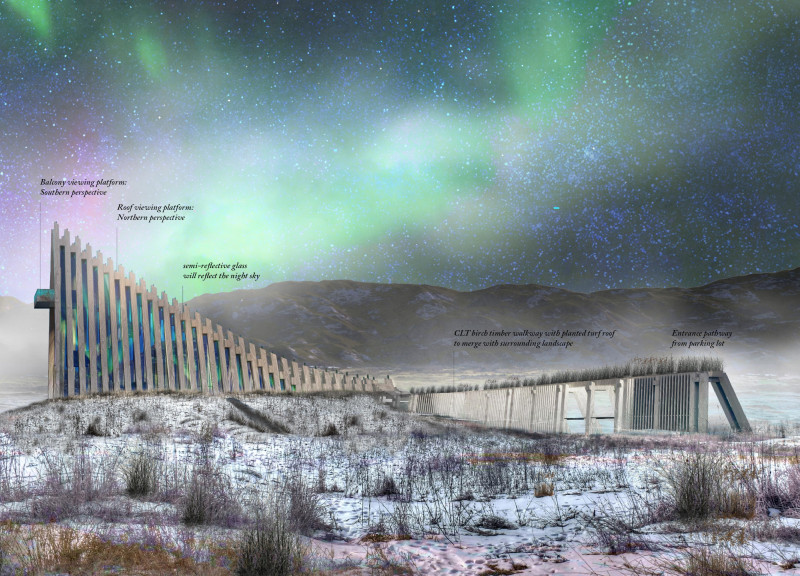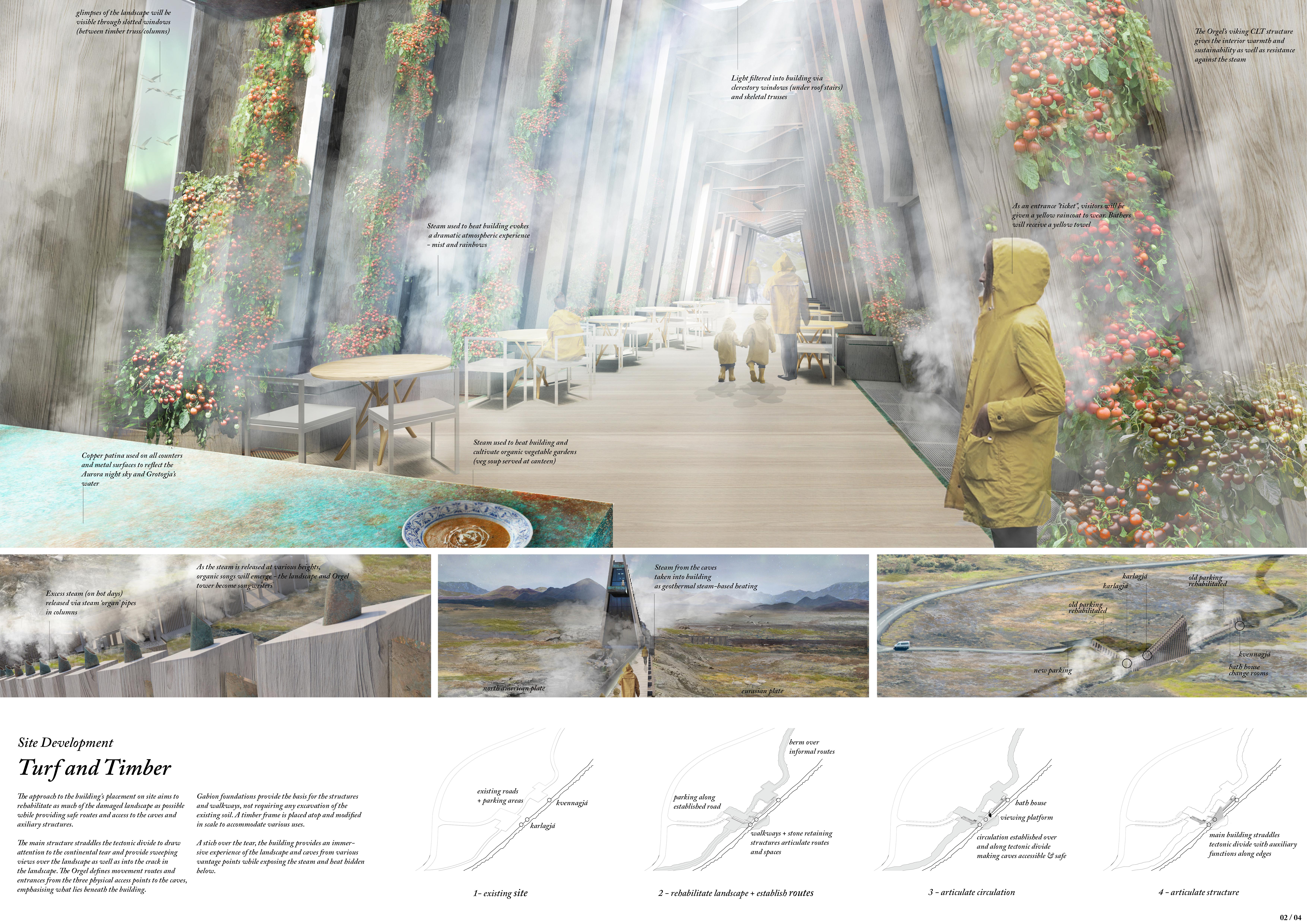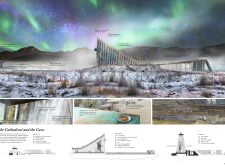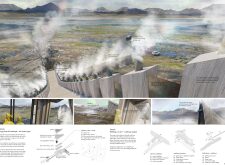5 key facts about this project
The Grjótagjá and the Steam-powered Greenhouse Orgel is located in Iceland’s geothermal landscape. The design combines local architectural traditions with modern elements to create a facility that encourages exploration and connects visitors to the natural surroundings. It serves as both a visitor center and an interactive space, integrating nature with structure in a thoughtful manner.
Architectural Concept
The design focuses on how buildings relate to the landscape, turning a former parking area into a beautiful tundra environment. A walkway leads visitors through this landscaped area, guiding them toward important features such as a bath house and bathing cave. Viewing platforms, one on the balcony and another on the roof, are positioned to provide expansive views of the landscape, enhancing the experience for those who come to enjoy the site.
Steam Interaction
Innovation is a key aspect of this facility, especially in how it uses geothermal energy. The steam is directed through pipes embedded in the structure, creating a dynamic interaction between the inside and outside. This system fills the interior with steam, which creates a mist and invites visitors to engage with their surroundings. The auditory experience is also special, as the steam production evokes the visual beauty of the Aurora Borealis, creating a memorable atmosphere.
Materiality and Sustainability
Material choices reflect a dedication to sustainability and the environment. The building primarily uses untreated Viking cross-laminated timber, which provides needed thermal efficiency while allowing the structure to blend into the landscape over the years. Gabion foundations support the facility and limit any disturbance to the soil. These choices underline a commitment to ecological consideration throughout all design steps.
Design Detail
Attention to detail enhances the overall experience. Natural light pours through slotted windows set between the timber trusses, providing framed views of the landscape outside. Pathways are carefully curated, and the steam system is integrated into the design. These elements work together to create a cohesive environment that highlights the relationship between built space and nature, reinforcing the building's purpose in the volcanic landscape.






















































